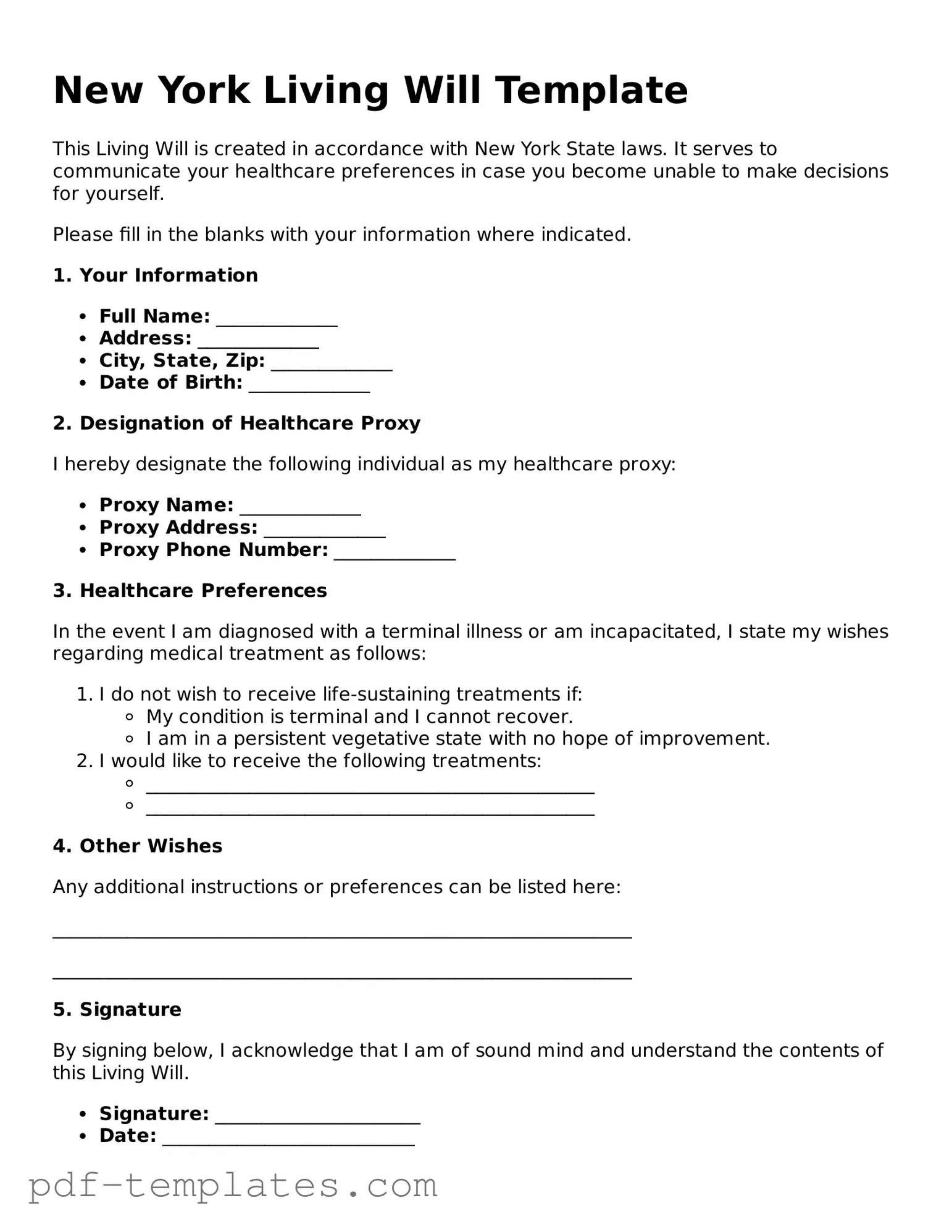The New York Health Care Proxy is a document that allows an individual to designate someone to make medical decisions on their behalf if they become unable to do so. Similar to a Living Will, it focuses on healthcare preferences and ensures that an individual's wishes are respected. While a Living Will outlines specific medical treatments one would or would not want, the Health Care Proxy provides the flexibility of having a trusted person interpret those wishes in real-time, adapting to unforeseen circumstances.
For those interested in firearm transactions, a helpful resource is the Texas Firearm Bill of Sale form guide, which provides essential information on how to properly document the sale and transfer of firearms in Texas. Understanding this legal requirement can help facilitate a smooth transaction between buyers and sellers.
The Advance Directive is a broader term that encompasses both the Living Will and the Health Care Proxy. It serves as a comprehensive guide for medical decisions and end-of-life care. Like the Living Will, an Advance Directive allows individuals to express their preferences regarding medical treatment, but it also includes the appointment of a decision-maker. This dual function ensures that both specific wishes and general healthcare management are addressed.
The Do Not Resuscitate (DNR) Order is a specific medical directive that instructs healthcare providers not to perform cardiopulmonary resuscitation (CPR) in the event of cardiac or respiratory arrest. While a Living Will may include preferences about resuscitation, a DNR Order is a more direct and immediate instruction. It is particularly useful in emergency situations, ensuring that a patient’s wishes regarding resuscitation are clearly understood and followed by medical staff.
The Physician Orders for Life-Sustaining Treatment (POLST) form is designed for individuals with serious health conditions. Similar to a Living Will, it communicates a patient's preferences regarding life-sustaining treatments. However, POLST is more actionable; it is a medical order signed by a healthcare provider and is intended to be honored across various healthcare settings. This makes it particularly effective in ensuring that a patient’s wishes are respected in both emergency and non-emergency situations.
The Durable Power of Attorney for Health Care is another document that allows an individual to appoint someone to make healthcare decisions on their behalf. This is similar to the Health Care Proxy but can extend beyond medical decisions to encompass financial matters as well. While both documents aim to ensure that a person’s wishes are honored, the Durable Power of Attorney can cover a broader range of decisions, providing a more comprehensive approach to managing one's affairs.
The Mental Health Advance Directive is a specialized form that allows individuals to outline their preferences for mental health treatment in the event they become incapacitated. Like a Living Will, it provides clarity on treatment preferences. However, it specifically addresses mental health issues, ensuring that a person’s wishes regarding psychiatric care are respected. This can include preferences about medication, hospitalization, or other mental health interventions.
The Living Will Declaration is often used interchangeably with the Living Will itself. It serves the same purpose: to express an individual’s wishes regarding end-of-life care and medical treatment preferences. While the terminology may differ, the core intent remains the same. Both documents aim to provide guidance to healthcare providers and loved ones during difficult decision-making moments.
The Organ Donation Consent form allows individuals to express their wishes regarding organ donation after death. While this document does not directly address medical treatment preferences, it is often included in discussions about end-of-life planning. Like a Living Will, it reflects an individual’s values and wishes, ensuring that their decisions regarding organ donation are respected and acted upon.
Finally, the Declaration of Guardian for Minor Children is a document that allows parents to designate a guardian for their children in the event of their incapacitation. While it is not directly related to healthcare decisions, it shares the same spirit of planning for the future. Just as a Living Will ensures that a person’s medical preferences are honored, this declaration ensures that a child’s welfare is safeguarded according to the parent’s wishes.
